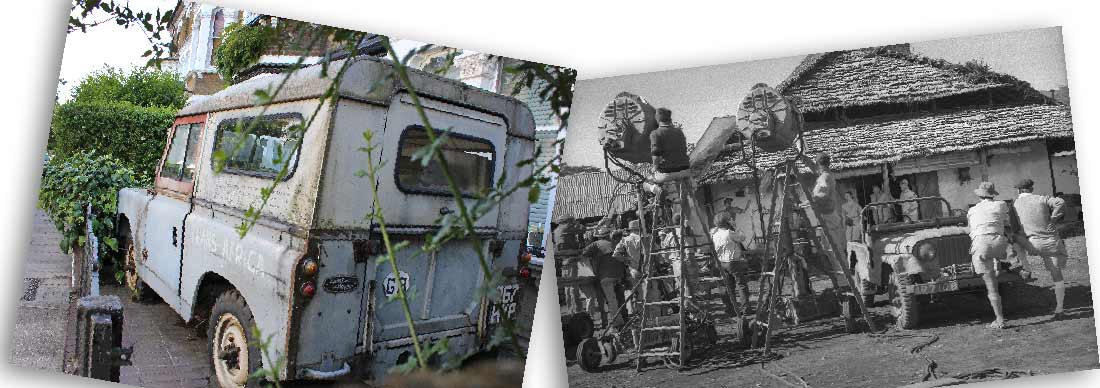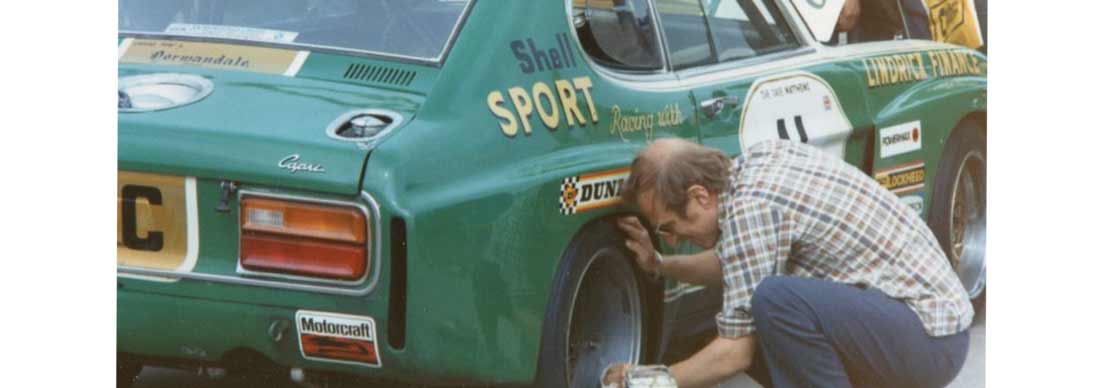Ralph Broad, The Wizard of Brum - Part 1
The Mini was not only a style icon; it provided some of the best racing of the 1960s: ask anyone who followed the sport in those days. Reputations were made behind the wheels of the little buzz-boxes: John Fitzpatrick and his namesakes Rhodes, Handley, Terry, Love, Whitmore, with the odd Paddy (Hopkirk), Gordon (Spice) or Steve (Neal). And often it was a Broadspeed-tuned car which was out front.

Broadspeed was the touring car team to beat in Britain in those ‘Swinging’ Sixties and Seventies. Its red and gold Minis, Ford Anglias and Escorts, and later factory Triumph Dolomites, were the envy of rivals, claiming multiple titles with Fitzpatrick and Andy Rouse.
Ralph Broad was born in 1926, but had to take control of the family garage business in Sparkbrook, Birmingham in 1941, on the death of his father. He was 14 years old. His latent engineering skills quickly showed, as he prepared and raced his own cars from 1955, but he was always looking for new challenges.
When the British Motor Corporation (BMC) launched the 850cc Mini in 1959, he was the first to see its potential as a race car to take on the Jaguars, Rileys, MGs and Ford Zodiacs which made up the bulk of British saloon car fields. He was immediately successful, winning the 850cc class and breaking the lap record first time out at Silverstone. This prompted him to start offering his race conversion kits to others, for £340, as well as road car tune-ups to publicise the SR Broad & Son business.
By 1962 he had formed Broadspeed Engineering, painting his cars in Rolls-Royce Red – ‘Nothing but the best,’ he said when asked why - and employing drivers such as Fitzpatrick. His little cars started to run rings round the factory Mini Cooper Ss and even the Ford Galaxies and Falcons, thanks to their lightness and amazing handling.
‘You never touched the brakes,’ recalls Fitz, ‘you just threw the car sideways to scrub off the speed, while keeping your foot hard on the accelerator to keep the revs up.’ By the end of 1963, Fitzpatrick had taken 25 victories to clinch the BRSCC 500 Club Trophy.
Broad was always careful to stay within the modifications permitted by regulations – scrutineers spent more time pulling his cars apart than any others, but not once did they ever find he had crossed the legal line. He became known for his scrupulous fairness, and perfect preparation.
By 1964, BMC was giving Broadspeed factory support, and as engine sizes increased through 970cc to 1071cc to 1275cc, the team was regularly beating the works Mini Coopers. The following year, BMW appointed Broadspeed its official European Saloon Car Championship squad, and its cars won the Monza 4 Hours, Spa and Zandvoort.
In 1966 he designed a fastback for the Mini, creating the Broadspeed GT 2+2 – ‘A small-scale Aston Martin,’ as he called it. He cut the roof off a standard Mini, then added a glass fibre roof with a swooping tail. The interior was upgraded with Restall front seats, thick carpets, lightweight body panels and stiffened suspension. A fold-down rear seat gave access to the rear trunk.
Above: ATV Today footage 17.01.1966: Modified Mini. Gwyn Richards interview with Ralph Broad, the designer of the new Broadspeed GT Coupe, a modified Mini Cooper designed as a road car to run at up to 125mph. Image copyright MEDIA ARCHIVE OF CENTRAL ENGLAND (MACE).
Please note: by clicking the above photo to you will be able to view the footage on the MACE website (www.macearchive.org).
The car was as immaculately finished as all Broad creations, available in four performance specifications, and was by far the best of the many Mini derivatives which swamped the market in the 1960s. Prices ranged from £800 for the 850cc version to £1500 for the 1275 S, but only 28 were sold before production finished when the Sparkbrook workshops were demolished to make way for a new city ring road, prompting Broadspeed to move to Southam.
Broad kept one in race trim to promote the GT 2+2, and Fitz took it to wins at Oulton Park, Brands Hatch, Zandvoort and the Eindhoven airport circuit of Welschap. Today they are hitting £90,000 ($115,000) at auction...
But Broad was already becoming irritated by BMC’s favouritism towards the Cooper Car Company – ‘All I wanted was a level playing field, but Longbridge decided otherwise’ - and for 1966 he turned to Ford. The Anglia was the most suitable car at that time, heavily modified and still sprayed Rolls-Royce Red. BMC was not impressed, even less so when Fitz claimed the 1966 British Saloon Car Championship with six class wins in the 997cc Broadspeed Anglia.

He had further success with the Anglia in 1967, that year winning seven BTCC races, but the 998cc Alan Fraser Imp of Bernard Unett was taking class points off him, and he was beaten to the overall title by Frank Gardner and his 7-litre Ford Falcon. But then came the Broadspeed Escort years, the red-and-gold front-wheel-waving 1300 GTs giving Fitz four 1968 BSCC wins and 2nd in an ETCC round at the Nürburgring.
Still retaining Fitz as its lead driver, Broadspeed scored three BSCC wins and three non-championship wins in 1969. Then in 1970, despite seven BSCC wins, Fitz was beaten into 3rd place by Bill McGovern in the Fraser Imp and Frank Gardner in the Boss Mustang. For the final race at Brands Hatch, Ford delivered its first 1600 Twin Cam for the Escort to Broadspeed, and beat the Mustangs and Camaros.
In 1971 there were again seven wins, now with the 16-valve Escort RS1600, but this time McGovern won the outright title as well as the 1-litre class, and Fitz had to settle for 3rd place, although he and Broadspeed again won the 2-litre class.
‘It was the Escort that really put Broadspeed on the global map,’ Broad recalled. ‘We won everything at the time with that Escort. We used a Watts linkage on the back end and twin trailing radius arms, basically like the old Aston Martin suspension.’
Broadspeed works manager Roger King recalled, ‘Ralph was a very, very clever man, although a complete nutter. We were at Thruxton standing on the roof of the Broadspeed truck, watching the race unfold, and he was jumping up and down shouting “Our drivers are useless” and things like that. Then it all went quiet: he had fallen off the back of the truck and broken his leg…’
To be continued in the next issue.
View other blog articles by Mark Cole
Books by Mark Cole







Leave a comment
This site is protected by hCaptcha and the hCaptcha Privacy Policy and Terms of Service apply.